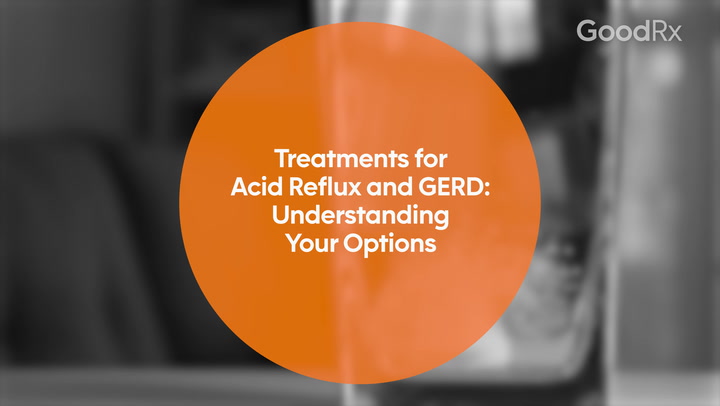
8 Differences Between Maalox and Tums: Active Ingredients, Product Availability, and More
Key takeaways:
Maalox (aluminum hydroxide / magnesium hydroxide / simethicone) and Tums (calcium carbonate) are over-the-counter (OTC) antacids that manage heartburn symptoms. They’re both effective treatments, but they have several differences.
Tums is available as a brand-name and generic product. Maalox only comes as a generic product; the brand-name version has been discontinued in the U.S.
Maalox and Tums have different dosage recommendations. A typical Maalox dose is 2 tsp to 4 tsp (10 mL to 20 mL) by mouth between meals and at bedtime as needed. A typical Tums dose is 2 to 4 tablets (1,000 mg to 2,000 mg) when your symptoms first begin.
Access savings on related medications
Table of contents

Heartburn creeps up on you when you least expect it. Whether it’s at home, a party, or while traveling, it can make you feel uncomfortable. Thankfully, several over-the-counter (OTC) medications are available to help manage your symptoms.
Two popular OTC antacids are Maalox (aluminum hydroxide / magnesium hydroxide / simethicone) and Tums (calcium carbonate). But how do Maalox versus Tums compare?
Below, we’ll walk through eight differences between Maalox and Tums. This guide can help you decide on the best option as you browse the aisles of your local pharmacy or supermarket.
1. Maalox and Tums have different active ingredients
If you check the Drug Facts label on the back of Maalox and Tums products, you’ll notice they contain different active ingredients.
Maalox typically includes three active ingredients: aluminum hydroxide (an antacid), magnesium hydroxide (an antacid), and simethicone (an antigas medication). Tums is also an antacid, but calcium carbonate is its main active ingredient.
Keep in mind: Many Tums products are available. Some of them contain other active ingredients in addition to calcium carbonate. For instance, Tums + Gas Relief also contains simethicone. And the dietary supplement melatonin is included in Tums + Chewy Bites Sleep Support.
2. Tums is available as a brand-name product
You can find Tums as a brand-name and generic product. By comparison, Maalox only comes as a generic medication. The brand-name version has been discontinued in the U.S.
Here’s a list of name-brand Tums products that are on the market (as of November 2024):
Tums Regular Strength 500 mg
Tums Extra Strength 750 mg
Tums Ultra Strength 1,000 mg
Tums Gummy Bites
Tums Chewy Bites
Tums Chewy Bites Cooling Sensation
Tums + Gas Relief
Tums Smoothies
Tums Sugar-Free
Tums Naturals
Tums Chewy Delights
Tums + Upset Stomach & Nausea Support
Tums + Sleep Support
Good to know: Keep these medications out of reach of children. Many of them look like candy. If your child accidentally takes Maalox or Tums, especially if they’re younger than 12 years old, contact Poison Control online or at 1-800-222-1222. This is a good precaution to take even if they don’t have any symptoms.
3. Maalox is not the same medication as Mylanta
Mylanta is another antacid that’s similar to Maalox (and Tums). Mylanta typically contains aluminum hydroxide, magnesium hydroxide, and simethicone.
Heartburn stories: Hear from real people about their experiences with heartburn and how they manage it.
How to take Tums: Your Tums (calcium carbonate) dosage depends on which product you’re taking. Learn more from pharmacists with this guide.
Heartburn options: Here’s how antacids compare to histamine-2 antagonists (H2 blockers) and proton pump inhibitors (PPIs) for heartburn relief.
Mylanta and Maalox are alike, but here’s a summary of their differences:
All Mylanta products contain simethicone. Not all Maalox products contain simethicone.
Some Mylanta products contain calcium carbonate instead of aluminum hydroxide.
Mylanta is available as both brand-name and generic medications. Maalox only comes as a generic.
If you can’t decide between Maalox, Mylanta, or Tums, ask your pharmacist or prescriber about which antacid is right for you.
4. Maalox and Tums both come in various forms
Maalox and Tums are both oral medications. But they’re available in many dosage forms.
Maalox generics typically come as a liquid and chewable tablet. Brand-name Tums dosage forms include chewable tablets and gummies. Generic versions of Tums are available as a liquid, tablet, and chewable tablet.
5. Maalox and Tums have different dosages, too
The recommended dosages of Maalox and Tums aren't the same. Their dosages also vary depending on the specific product you’re taking — each brand actually refers to a line of products.
For instance, the recommended Maalox liquid dosage is 2 tsp to 4 tsp (10 mL to 20 mL) by mouth between meals and at bedtime as needed. Don’t take more than 16 tsp (80 mL) in 24 hours (1 day).
The recommended Tums Regular Strength dosage is 2 to 4 tablets (1,000 mg to 2,000 mg) when your symptoms begin. You shouldn’t take more than 15 tablets (7,500 mg) in 24 hours (1 day). For Tums Ultra Strength, you can chew 2 to 3 tablets (2,000 mg to 3,000 mg) when your symptoms begin. But don’t take more than 7 tablets (7,000 mg) in 24 hours (1 day).
Good to know: The OTC labeling for Maalox and Tums provide dosage recommendations for adults and kids age 12 years and older. If your child is 2 to 11 years old, Pepto Kids is a safer option for managing an upset stomach. It contains a lower amount of calcium carbonate (400 mg) in each chewable tablet.
6. Maalox and Tums have unique side effects and interactions
Medication safety likely factors into your decision to select Maalox versus Tums. Both medications are generally considered safe. But they have certain side effects and interactions you should be aware of.
Side effects
Maalox side effects are typically mild. Constipation and diarrhea are some of the most frequent complaints, but they’re not common overall.
In rare cases, Maalox may cause more serious side effects. They’re more likely to happen in people with kidney problems. If your kidneys aren’t working properly, the aluminum and magnesium found in Maalox can accumulate in your body. Seek emergency medical attention right away if you experience confusion, seizures, or an irregular heartbeat.
Like Maalox, Tums' side effects are generally mild and short lived. Constipation, gas, and nausea are a few examples.
While it’s unlikely, taking Tums could cause hypercalcemia (high calcium in the blood). If you experience fatigue, nausea, or appetite loss, reach out to your prescriber.
Interactions
Antacids like Maalox and Tums can bind to certain medications if they’re in your gut at the same time, making them less effective. The thyroid medication Synthroid (levothyroxine) is a top example. It’s best to separate Synthroid from antacids by at least 4 hours.
Antacids similarly bind to certain antibiotics. Levofloxacin and Vibramycin (doxycycline) are a couple of examples. Separating antacids from these medications by at least 2 hours can help make sure you get the most benefits from your antibiotic.
What’s more, some medications depend on stomach acid to do their job properly. Since antacids lower your stomach acid, they could make these medications less effective by lowering how much medication your body absorbs. The antifungal ketoconazole and seizure medication Dilantin (phenytoin) are common examples. To prevent this interaction, you can separate these medications from antacids by about 2 hours.
Keep a current medication list handy for your pharmacist and prescriber. They can check if Maalox or Tums interact with anything you take.
7. Tums comes in many more flavors than Maalox
Just like finding your favorite ice cream, medication flavor can be a game changer. This is especially true if you or your child have particular taste preferences.
Maalox comes in a few flavors, such as cherry, lemon, and mint. But Tums has many different flavor options, including:
Mixed berry
Strawberry
Raspberry
Lemon
Black cherry
Watermelon
Coconut
Pineapple
Cherry
Peppermint
Tropical fruit
Ginger berry
Berry fusion
8. Some people take Tums for calcium supplementation
If you aren’t getting enough calcium from your diet, you may need a calcium supplement. In some cases, your prescriber may recommend taking Tums as an affordable calcium supplement for osteoporosis (weak bones) prevention.
Tums contains calcium carbonate, which has a higher amount of elemental calcium (40%) than other supplements, like calcium citrate (21%). Elemental calcium is the amount of calcium your body actually absorbs. Your prescriber can tell you how many Tums tablets to take to meet your calcium needs.
Which is better: Maalox or Tums?
There isn’t one clear winner. The best one depends on what symptoms you’re treating and other health conditions you may have.
Maalox and Tums both work quickly to provide heartburn relief. But if you’re experiencing gas symptoms, Maalox might be a better option since it contains simethicone.
If you’re pregnant, Tums is considered a first-choice option for managing heartburn symptoms. In addition to the added benefits of building strong bones, getting enough calcium may also prevent preeclampsia (high blood pressure and kidney damage in pregnancy).
The bottom line
Maalox and Tums are over-the-counter antacids. While they both manage heartburn symptoms, they have several differences.
Maalox typically contains aluminum hydroxide, magnesium hydroxide, and simethicone. Tums contains calcium carbonate. Maalox is only available as a generic medication, while Tums comes as both brand-name and generic products. Reach out to your pharmacist or prescriber to see which antacid is right for you.
Why trust our experts?



References
Altuwaijri, M., et al. (2022). Evidence-based treatment recommendations for gastroesophageal reflux disease during pregnancy: A review. Medicine.
DailyMed. (n.d.). Search results for aluminum hydroxide, magnesium hydroxide, simethicone.
DailyMed. (n.d.). Search results for calcium carbonate.
DailyMed. (n.d.). Search results for Mylanta Classic.
DailyMed. (n.d.). Search results for Tums.
Garg, V., et al. (2022). Antacids revisited: Review on contemporary facts and relevance for self-management. Journal of International Medical Research.
Haleon US Holdings LLC. (2024). Tums- calcium carbonate tablet [package insert]. DailyMed.
Haleon US Holdings LLC. (2024). Tums Chewy Bites with gas relief- calcium carbonate and simethicone tablet, chewable [package insert]. DailyMed.
Haleon US Holdings LLC. (2024). Tums Ultra- calcium carbonate tablet, chewable [package insert]. DailyMed.
MedlinePlus. (2023). Aluminum hydroxide and magnesium hydroxide.
Office of Dietary Supplements. (2024). Calcium: Fact sheet for health professionals. National Institutes of Health.
Paige, N. M., et al. (2009). The top 10 things nephrologists wish every primary care physician knew. Mayo Clinic Proceedings.
Procter & Gamble Manufactura S de RL de CV. (2024). Pepto Kids- calcium carbonate tablet, chewable [package insert]. DailyMed.
Walgreen Company. (2023). Advanced regular strength antacid- aluminum hydroxide, magnesium hydroxide, dimethicone suspension [package insert]. DailyMed.
























